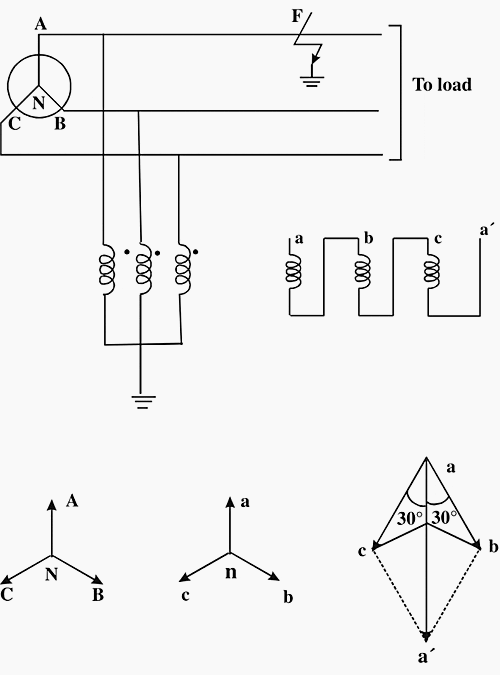Very low-impedance ground connection
As is evident from the name, a solidly grounded system is one where the neutral of the system is directly connected to ground without introducing any intentional resistance in the ground circuit.

With appropriate choice of the type and number of grounding electrodes, it is possible to obtain a very low-impedance ground connection, sometimes as low as 1Ω.
A solidly grounded system clamps the neutral tightly to ground and ensures that when there is a ground fault in one phase, the voltage of the healthy phases with reference to ground does not increase to values appreciably higher than the value under the normal operating conditions.

The advantages of this system
1. A fault is readily detected and therefore isolated quickly by circuit protective devices. Quite often, the protection against short circuit faults (such as circuit breakers or fuses) is adequate to sense and isolate ground faults as well.
2. It is easy to identify and selectively trip the faulted circuit so that power to the other circuits or consumers can continue unaffected (contrast this with the ungrounded system where a system may have to be extensively disturbed to enable detection of the faulty circuit).
3. No possibility of transient overvoltages.
Disadvantage
The main disadvantage is that when applied in distribution circuits of higher voltage (5 kV and above), the very low ground impedance results in extremely high fault currents almost equal to or in some cases higher than the system’s three-phase short circuit currents.
This can increase the rupturing duty ratings of the equipment to be selected in these systems.
For these reasons, use of solid grounding of neutral is restricted to systems of lower voltage (380 V/480 V) used normally in consumer premises. In all the other cases, some form of grounding impedance is always used for reducing damage to critical equipment components.
2014 NEC – Grounding Electrode System (VIDEO)
Cant see this video? Click here to watch it on Youtube.
Reference: Practical Grounding, Bonding, Shielding and Surge Protection G. Vijayaraghavan, Mark Brown and Malcolm Barnes (Buy hardcopy from Amazon)











Great
Very good article, I would appreciate knowing your opinion about using this system in a small factory with about 30 low horsepower engines, and the negative implications would have to foresee.
regards
Milton
The majority of the high voltage systems, tranission and distribution, in the United States are either solidly grouneded or effectively grounded. The definition of the different types of grounding can be found in the NESC. The reasonS are the advantages stated in the article.
Edvard
I want to express many thanks for the many articles published. These articles have been well written, informative, and accurate. It has been especially appreciated also to see in these articles the formulas used to explain the objectives for safe functioning systems, and I don’t want to forget especially the diagrams and pictures used in the articles. This practice goes a long way to help young minds aspiring to an electrical career, to quickly relate to the entire subject being presented in these articles.
Regards
Jim Archer
Article is very clear and crisp, thanks for the information.
Connecting the grounding point on a device to natural ground (earth) via a highly conductive medium.
this article is great… simple and easy to understand language….. got a very clear idea of the topic
Thank You
You’re welcome Bhargav!